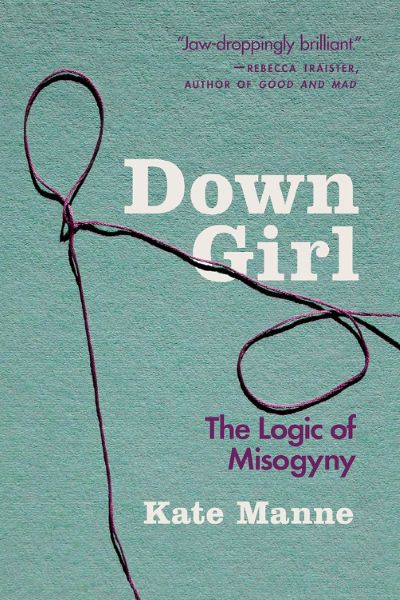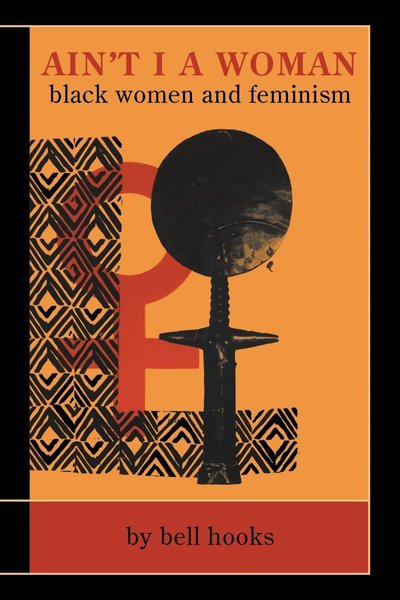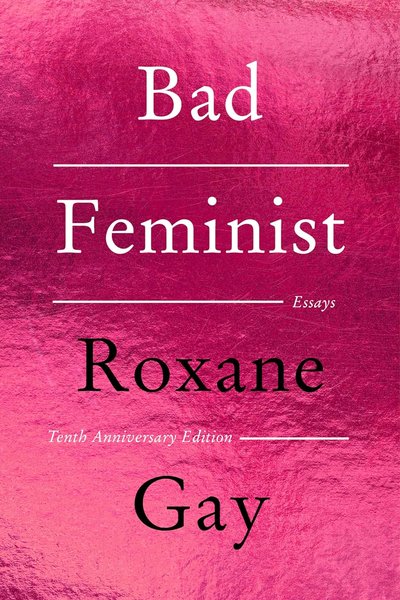Down Girl: The Logic of Misogyny
A groundbreaking philosophical analysis that redefines misogyny not as hatred of women, but as a system designed to police and punish women who challenge patriarchal norms. Manne provides a rigorous framework for understanding how misogyny functions as the enforcement branch of patriarchy.

📝 Book Review
“Down Girl: The Logic of Misogyny” stands as one of the most significant contributions to feminist philosophy and social analysis of the twenty-first century. Kate Manne’s groundbreaking work fundamentally challenges conventional understandings of misogyny, offering a revolutionary framework that has reshaped academic and popular discussions of gender-based oppression. Published by Oxford University Press in 2017, this rigorous philosophical analysis has earned widespread recognition, including the 2019 PROSE Award for Excellence in the Humanities and the American Philosophical Association’s biennial Book Prize.
Kate Manne, Associate Professor of Philosophy at Cornell University, brings exceptional philosophical rigor to the analysis of misogyny as a social and political phenomenon. Her background in analytic philosophy, combined with her commitment to feminist theory and social justice, positions her uniquely to provide both the conceptual clarity and political insight necessary for understanding how misogyny operates in contemporary society. Manne’s previous work in moral philosophy and feminist philosophy established her reputation as a scholar capable of bringing philosophical precision to complex social and political questions.
Manne’s approach throughout “Down Girl” demonstrates the power of analytical philosophical methods when applied to feminist concerns. Rather than relying primarily on empirical studies or cultural analysis, she employs conceptual analysis, logical argumentation, and careful definitional work to construct a coherent theoretical framework for understanding misogyny. This philosophical approach allows her to identify patterns and structures that might be missed by purely empirical approaches while providing the conceptual tools necessary for more effective political and social analysis.
Redefining Misogyny: Beyond Individual Hatred
The central innovation of Manne’s analysis lies in her reconceptualization of misogyny itself. Conventional understandings typically define misogyny as individual hatred or dislike of women, often focusing on psychological attitudes or personal animosity. Manne argues that this individualistic approach fundamentally misunderstands how misogyny actually operates as a social and political force.
Instead, Manne proposes that misogyny should be understood as a system—a set of social practices, institutions, and norms designed to police women’s behavior and punish those who transgress patriarchal expectations. This systemic understanding reveals misogyny not as an aberrational individual pathology but as a crucial mechanism for maintaining gender hierarchy and male dominance.
Manne’s redefinition proves particularly powerful because it explains why misogyny often doesn’t look like straightforward hatred. Men who engage in misogynistic behavior may genuinely care for certain women in their lives—wives, daughters, mothers—while still participating in systems that punish women who challenge patriarchal norms. This apparent contradiction dissolves once we understand misogyny as selective enforcement rather than universal hatred.
The systemic approach also explains why misogyny often intensifies when women achieve positions of power or challenge traditional gender roles. Rather than random expressions of individual dislike, misogynistic responses represent systematic efforts to restore gender hierarchy when it appears threatened. This insight proves crucial for understanding contemporary political and cultural dynamics.
The Patriarchy-Sexism-Misogyny Framework
One of Manne’s most important theoretical contributions involves her careful distinction between patriarchy, sexism, and misogyny as related but distinct concepts. This framework provides essential conceptual clarity for understanding how gender oppression operates through multiple, interconnected mechanisms.
Patriarchy, in Manne’s analysis, refers to the overall system of male dominance—the social, political, and economic arrangements that privilege men and masculinity while subordinating women and femininity. Patriarchy represents the structural foundation of gender inequality, but it requires ideological and enforcement mechanisms to maintain itself.
Sexism serves as patriarchy’s ideological wing, providing the beliefs, assumptions, and justifications that make male dominance seem natural, inevitable, or desirable. Sexist ideology includes assumptions about women’s natural inferiority, different capabilities, or appropriate roles that justify their exclusion from power and resources. Sexism works to legitimize patriarchal arrangements by making them appear reasonable or just.
Misogyny functions as patriarchy’s enforcement branch, the system that punishes women who challenge or threaten patriarchal norms. While sexism provides the justifications for male dominance, misogyny provides the penalties for female resistance. This enforcement function explains why misogyny often targets women who are successful, powerful, or non-conforming rather than those who accept traditional roles.
This tripartite framework proves invaluable for analyzing specific instances of gender-based oppression. It allows for precise identification of whether particular behaviors or institutions primarily function to justify male dominance (sexism) or punish female resistance (misogyny), enabling more targeted and effective responses.
The Logic of Enforcement
Manne’s analysis reveals misogyny as operating according to a particular logic of enforcement that she carefully explicates. This logic involves the systematic punishment of women who violate patriarchal expectations while rewarding those who conform to traditional roles. Understanding this logic proves crucial for recognizing misogynistic patterns and developing effective responses.
The enforcement logic operates through what Manne calls “gendered norms and expectations”—implicit rules about how women should behave, what roles they should occupy, and what qualities they should display. These expectations include not only obvious restrictions on women’s professional or political activities but also more subtle requirements about demeanor, appearance, emotional expression, and social behavior.
Women who violate these expectations face various forms of punishment designed to restore patriarchal order. These punishments can range from subtle social disapproval and exclusion to explicit harassment, violence, and institutional discrimination. The severity of punishment often correlates with the perceived threat that the woman’s behavior poses to patriarchal arrangements.
Conversely, women who conform to patriarchal expectations often receive positive reinforcement and protection. This creates powerful incentives for compliance while demonstrating that the system can be “benevolent” toward women who accept their prescribed roles. This selective benevolence helps obscure the systematic nature of misogynistic enforcement.
Manne’s analysis reveals how this enforcement logic operates across different contexts—from intimate relationships to workplaces to political arenas. The specific mechanisms may vary, but the underlying pattern of punishment for transgression and reward for compliance remains consistent.
Misogyny in Political Contexts
“Down Girl” provides particularly insightful analysis of how misogyny operates in political contexts, examining both electoral politics and broader political participation. Manne’s framework proves especially valuable for understanding the gendered dynamics of political power and the obstacles women face in achieving political equality.
The book’s analysis of the 2016 U.S. presidential election offers a compelling case study in political misogyny. Manne examines how Hillary Clinton faced punishment for violating gendered expectations about female behavior—appearing too ambitious, too aggressive, or too power-seeking. The intense negative reactions to Clinton’s candidacy, Manne argues, exemplify misogyny’s enforcement function, punishing a woman who sought the ultimate position of political power.
This analysis extends beyond individual electoral contests to examine broader patterns of women’s political participation. Manne reveals how misogynistic enforcement creates systematic obstacles to women’s political advancement, from the informal networks that exclude women from political opportunities to the explicit harassment that targets women who seek political voice.
The framework also illuminates how different types of political women face different forms of misogynistic enforcement. Women who challenge existing power structures directly often face more severe punishment than those who work within established frameworks, while women from marginalized communities may face intersectional forms of enforcement that combine misogyny with racism, classism, or other forms of oppression.
Testimonial Injustice and Credibility Deficits
Building on Miranda Fricker’s work on epistemic injustice, Manne provides detailed analysis of how misogyny operates through systematic credibility deficits—the tendency to accord less credibility to women’s testimony and knowledge claims. This analysis proves crucial for understanding how misogyny shapes not only formal political processes but also everyday interactions and institutional practices.
Manne demonstrates how women consistently face higher standards for credibility than men, requiring more evidence, more credentials, or more social validation to be believed. This credibility deficit operates across multiple domains, from courtrooms where women’s testimony about sexual assault is questioned to workplaces where women’s expertise is doubted to personal relationships where women’s experiences are dismissed.
The analysis reveals how credibility deficits serve misogyny’s enforcement function by making it difficult for women to challenge patriarchal arrangements or report violations. When women cannot be believed or taken seriously, their ability to resist oppression or hold men accountable becomes severely limited.
Manne’s framework also illuminates the intersectional dimensions of credibility deficits, showing how women of color, poor women, and other marginalized women face even greater obstacles to being heard and believed. This analysis proves essential for understanding how misogyny intersects with other systems of oppression to create multiple, compounding forms of silencing.
The Moral Psychology of Misogyny
One of the most sophisticated aspects of Manne’s analysis involves her examination of the moral psychology underlying misogynistic behavior and attitudes. Rather than simply condemning misogyny as irrational hatred, she provides careful analysis of the psychological mechanisms that make misogynistic responses seem reasonable or justified to those who engage in them.
Manne reveals how misogyny often operates through moral emotions like indignation, resentment, and a sense of injustice—but directed in ways that serve patriarchal interests rather than genuine moral concerns. Men may genuinely feel wronged or threatened when women challenge traditional arrangements, experiencing their responses as moral rather than simply self-interested.
This analysis proves important for understanding why rational argument alone often fails to challenge misogynistic attitudes. When misogyny operates through moral emotions and perceived justice concerns, purely logical critiques may be insufficient to change deeply held beliefs about appropriate gender relations.
Manne’s framework also reveals how misogynistic moral psychology often involves what she calls “testimonial smothering”—the tendency to interpret women’s accounts of discrimination or oppression as evidence of women’s tendency to complain, exaggerate, or make false accusations rather than as legitimate reports of actual injustice.
Intersectionality and Complex Hierarchies
While focusing primarily on gender-based oppression, Manne provides important analysis of how misogyny intersects with other systems of domination to create complex hierarchies of privilege and oppression. Her framework proves adaptable to understanding how different groups of women face different forms and intensities of misogynistic enforcement.
The analysis reveals how women who occupy multiple marginalized identities often face intersectional forms of punishment that combine misogyny with racism, classism, homophobia, transphobia, or other forms of oppression. These intersectional experiences cannot be understood simply as the sum of separate forms of discrimination but require analysis of how different systems of oppression interact and reinforce each other.
Manne’s framework also illuminates how some women may benefit from certain privileges while still facing misogynistic enforcement in other contexts. White women, for example, may receive protection from racial privilege while still facing punishment for gender nonconformity. This analysis helps explain the complex ways that women may simultaneously experience privilege and oppression.
Institutional Analysis and Structural Solutions
“Down Girl” provides important analysis of how misogyny operates through institutions rather than simply individual interactions. Manne examines how organizations, policies, and formal structures can embody and enforce misogynistic norms even when individual participants may have good intentions.
This institutional analysis reveals how misogyny can persist even in contexts where explicit sexist beliefs have largely disappeared. Organizations may maintain practices and norms that systematically disadvantage women while formally endorsing gender equality. Understanding these institutional mechanisms proves crucial for developing effective interventions.
Manne’s framework suggests that addressing misogyny requires structural rather than simply individual solutions. While changing individual attitudes and behaviors remains important, systematic enforcement requires systematic responses that address institutional practices, organizational cultures, and structural arrangements that maintain gender hierarchy.
Contemporary Applications and Political Relevance
The theoretical framework developed in “Down Girl” has proven remarkably applicable to understanding contemporary political and cultural developments. The book’s publication shortly before the #MeToo movement provided crucial conceptual tools for analyzing the patterns revealed by that cultural moment.
Manne’s analysis helps explain why powerful men often face such intense resistance when accused of sexual misconduct—their punishment would represent a significant challenge to patriarchal authority that the system works to prevent. Similarly, the framework illuminates why women who speak out about sexual harassment or assault often face retaliation and disbelief rather than support.
The rise of authoritarian and populist movements has also validated many of Manne’s insights about political misogyny. The intense hostility directed at women political leaders, journalists, and activists demonstrates the enforcement mechanisms that Manne identifies operating at a broader political scale.
Methodological Contributions
Beyond its substantive insights, “Down Girl” makes important methodological contributions to feminist philosophy and social analysis. Manne demonstrates how careful conceptual analysis can illuminate social and political phenomena that might otherwise remain confused or misunderstood.
The book’s approach shows how philosophical methods can enhance rather than replace empirical social science, providing conceptual frameworks that make better sense of observed patterns and behaviors. This integration of philosophical and empirical approaches offers a model for interdisciplinary feminist scholarship.
Manne’s careful definitional work also demonstrates the political importance of conceptual precision. By clarifying what misogyny actually is and how it operates, the book provides tools for more effective political action and social change.
Implications for Feminist Strategy
The theoretical framework developed in “Down Girl” has significant implications for feminist political strategy and social change efforts. Understanding misogyny as systematic enforcement rather than individual hatred suggests different approaches to challenging gender oppression.
The analysis implies that feminist efforts should focus not only on changing individual attitudes but also on dismantling institutional mechanisms that enforce gender hierarchy. This might involve policy changes, organizational reforms, and cultural interventions designed to reduce the penalties women face for challenging patriarchal norms.
Manne’s framework also suggests the importance of solidarity and collective action in challenging misogynistic enforcement. When women face punishment for individual resistance, collective responses can provide protection and support while challenging the system’s ability to isolate and punish individual women.
Critical Reception and Scholarly Impact
“Down Girl” has received widespread critical acclaim and has significantly influenced academic discussions of gender, feminism, and social justice. The book’s awards and recognition reflect its contribution to both philosophical scholarship and broader public understanding of gender-based oppression.
The work has been particularly influential in feminist philosophy, providing conceptual tools that other scholars have applied to various contexts and questions. Its interdisciplinary approach has also made it valuable for researchers in sociology, political science, psychology, and other fields concerned with gender inequality.
The book’s clear writing and accessible arguments have also made it influential beyond academic contexts, shaping public discussions of misogyny and gender-based oppression in media, politics, and popular culture.
Through her rigorous philosophical analysis and innovative theoretical framework, Kate Manne has provided an essential resource for understanding one of the most persistent forms of oppression in contemporary society. “Down Girl” stands as both a significant contribution to feminist theory and a practical tool for those working to challenge gender-based oppression. Her careful conceptual work has fundamentally shifted how we understand misogyny, providing the theoretical foundation necessary for more effective efforts to achieve gender equality and social justice.
Book Info
Related Topics
🛒 Get This Book
 Buy on Amazon
Buy on Amazon Related Books
Book Discussion
Share your thoughts and opinions on this book and exchange insights with other readers
Join the Discussion
Share your thoughts and opinions on this book and exchange insights with other readers
Loading comments...


